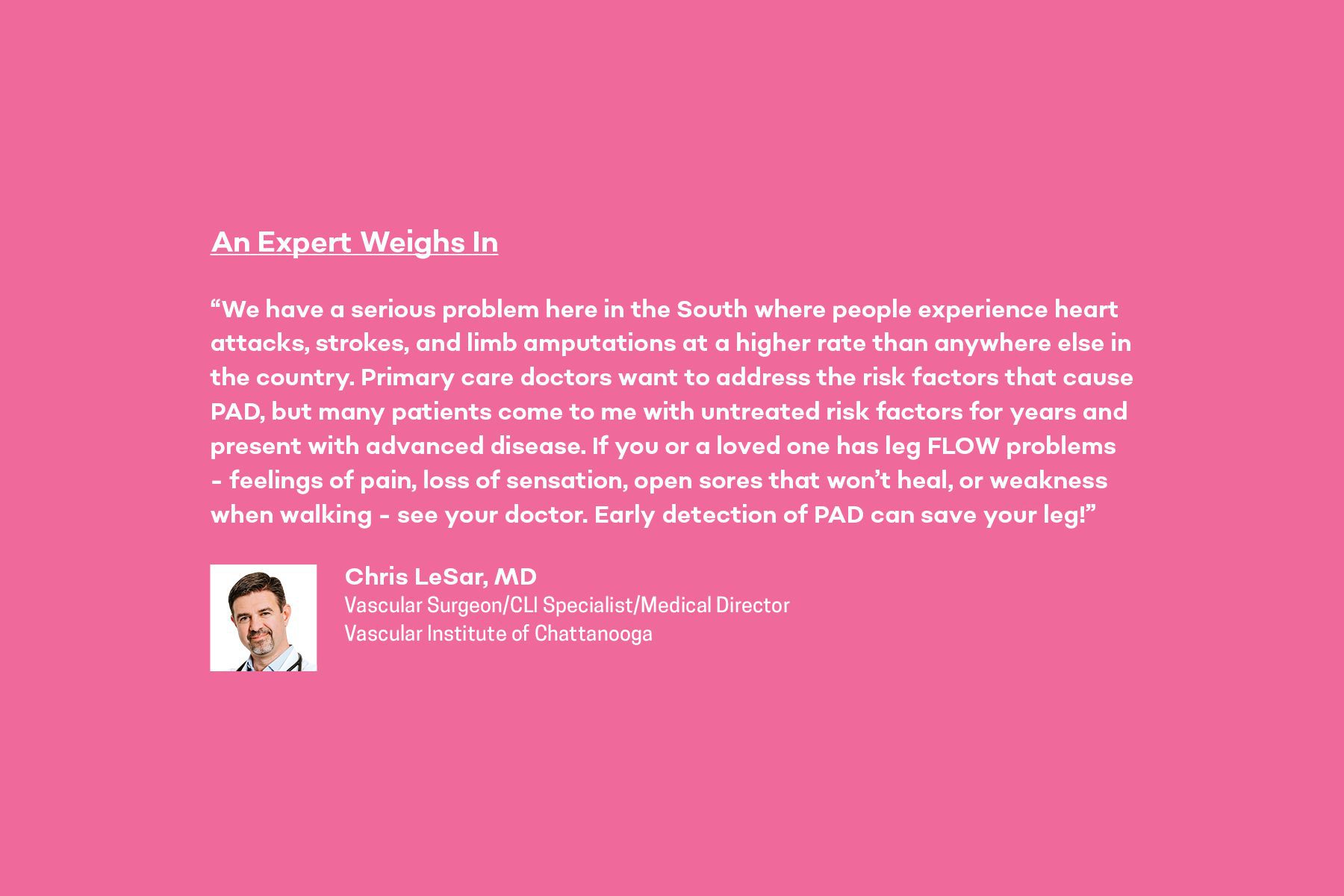Annual Women’s Health Section
It’s easy to let health fall by the wayside, especially when life gets busy. But it’s always important to listen to the little voice in your head that suspects something isn’t right. Here, we highlight common health concerns for women, what to look out for, and when to see your doctor. Don’t let your busy schedule stand in the way of getting the help you need!
By Lindsey June
Peripheral artery disease is a vascular condition that can have serious complications for women.
Understanding Peripheral Artery Disease
Peripheral artery disease (PAD) is a circulatory disorder where narrowed arteries reduce blood flow to the limbs. When the arms and legs don’t receive enough blood, they may not function properly. PAD is a serious condition that often goes undiagnosed until symptoms present themselves.
It is particularly important for women to stay on top of their vascular health, as reproductive factors make them susceptible to conditions like PAD. Studies show that women are also hit harder – and sooner – than men with the condition.
Causes and Symptoms
Peripheral artery disease is caused by fatty deposits that build up on artery walls, reducing blood flow. When this process – known as atherosclerosis – occurs in the arteries that supply blood to the limbs, it causes PAD. Risk factors for atherosclerosis include smoking, diabetes, obesity, high blood pressure, and a family history of heart disease.
Those with PAD may develop symptoms such as numbness or weakness in the limbs; painful cramping in the hips, thighs, or calves; coldness in the legs and feet; sores on the feet that won’t heal; shiny skin on the legs; a change in color of the legs; and pain and cramping when using your arms.
Conditions Associated With PAD
If left untreated, peripheral artery disease can cause serious health problems such as heart attacks, strokes, transient ischemic attacks (TIA), and renal artery disease. Amputation may be necessary to prevent further complications. Women who experience strokes face worse outcomes than men, and symptoms often present themselves later.
Prevention and Treatment
It is highly important for women to know the risk factors associated with peripheral artery disease. Preventative measures include regular exercise, eating foods low in saturated fat, maintaining a healthy weight, quitting smoking, and keeping blood sugar under control if you have diabetes. These lifestyle changes can also help treat PAD once it has already developed. Additionally, procedures like angioplasty, stent placements, and atherectomies can help with prognosis.
If you’re a woman at risk for peripheral artery disease, it is important to reach out to your doctor to make sure you get a diagnosis and proper treatment before more serious complications arise.


